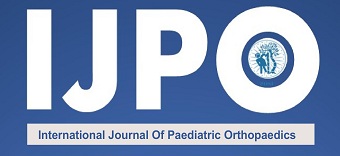Outcomes in Paediatric Proximal Third Forearm Fractures: A Systematic Review
Volume 10 | Issue 3 | September-December 2024 | Page: 2-5 | Nathan McKenzie, Connor Zale, Ryan Nguyen, Kevin Krul
DOI- https://doi.org/10.13107/ijpo.2024.v10.i03.198
Open Access License: CC BY-NC 4.0
Copyright Statement: Copyright © 2024; The Author(s).
Submitted: 14/11/2024; Reviewed: 20/11/2024; Accepted: 04/12/2024; Published: 10/12/2024
Authors: Nathan McKenzie B.S. [2], Connor Zale M.D. [1], Ryan Nguyen B.S. [3], Kevin Krul M.D. [1]
[1] Tripler Army Medical Center. 1 Jarrett White Rd. Medical Center. Honolulu, HI. 96859.
[2] University of Oklahoma College of Medicine. 800 Stanton L Young Blvd. Oklahoma City, OK. 73117.
[3] John A. Burns School of Medicine. University of Hawaii. 651 lalo St, Honolulu, HI 96813.
Address of Correspondence
Dr. Connor Zale,
Tripler Army Medical Center. 1 Jarrett White Rd. Medical Center. Honolulu, HI. 96859.
Email: Connor.zale11@gmail.com
Abstract
Objective: To analyze initial treatment failure, functional and radiographic outcomes following non-operative management of Paediatric third proximal forearm fractures.
Methods: A search was performed on PUBMED/MEDLINE, Cochrane Database and Embase on 28 January 2024. Search keywords were “Paediatric, proximal, forearm and fracture”. Articles were reviewed for non-operative management of proximal forearm fractures. Articles were reviewed for acceptable angulation for successful treatment, rate of conversion to operative management or remanipulation, functional outcomes and final radiographic angulation.
Results: 181 articles were obtained from a literature search. 10 articles had incomplete data. 10 articles reported the rate for initial treatment failure. 4 articles reported individual patient functional outcomes. 3 articles reported individual residual angulation.
There were 392 cases of proximal forearm fractures. The rate of initial treatment failure which required remanipulation or surgery ranged from 0-83.8%. Individual functional outcomes were reported for 22 patients. The average age was 10.93.9 years old. 16/22 cases had full range of motion. The 6 cases with limited range of motion had residual angulation of 5-15 (11.54.2). 3/5 cases with 15 of residual angulation had full range of motion.
Conclusion: The rate of initial non-operative treatment failure ranged from 0-83.8% for proximal forearm fractures. Families should be advised on the high rate of failure for initial non-operative management and the possible need for remanipulation or surgery. Patients that are 10 years and older are at an increased risk for loss of reduction and possible need for surgical treatment.
Keywords: Both bone, Proximal third forearm, Paediatric forearm fracture
References
1. Hedström EM, Svensson O, Bergström U, Michno P (2010) Epidemiology of fractures in children and adolescents. Acta Orthop 81:148–153. https://doi.org/10.3109/17453671003628780
2. Noonan KJ, Price CT (1998) Forearm and distal radius fractures in children. J Am Acad Orthop Surg 6:146–156. https://doi.org/10.5435/00124635-199805000-00002
3. Pace JL (2016) Paediatric and Adolescent Forearm Fractures: Current Controversies and Treatment Recommendations. J Am Acad Orthop Surg 24:780–788. https://doi.org/10.5435/JAAOS-D-15-00151
4. Bowman EN, Mehlman CT, Lindsell CJ, Tamai J (2011) Nonoperative treatment of both-bone forearm shaft fractures in children: predictors of early radiographic failure. J Paediatr Orthop 31:23–32. https://doi.org/10.1097/BPO.0b013e318203205b
5. Carey PJ, Alburger PD, Betz RR, et al (1992) Both-bone forearm fractures in children. Orthopaedics 15:1015–1019. https://doi.org/10.3928/0147-7447-19920901-04
6. Creasman C, Zaleske DJ, Ehrlich MG (1984) Analyzing forearm fractures in children. The more subtle signs of impending problems. Clin Orthop Relat Res 40–53
7. Dittmer AJ, Molina D, Jacobs CA, et al (2019) Paediatric Forearm Fractures Are Effectively Immobilized With a Sugar-Tong Splint Following Closed Reduction. J Paediatr Orthop 39:e245–e247. https://doi.org/10.1097/BPO.0000000000001291
8. Lyman A, Wenger D, Landin L (2016) Paediatric diaphyseal forearm fractures: epidemiology and treatment in an urban population during a 10-year period, with special attention to titanium elastic nailing and its complications. J Paediatr Orthop B 25:439–446. https://doi.org/10.1097/BPB.0000000000000278
9. Neal KM, Osterbur TA, Kiebzak GM (2020) Improving Quality in the Treatment of Paediatric Forearm Fractures: Minimizing the Need for Repeat Intervention With Long-arm Extension Casting. J Paediatr Orthop 40:329–333. https://doi.org/10.1097/BPO.0000000000001519
10. Price CT, Scott DS, Kurzner ME, Flynn JC (1990) Malunited forearm fractures in children. J Paediatr Orthop 10:705–712. https://doi.org/10.1097/01241398-199011000-00001
11. Zionts LE, Zalavras CG, Gerhardt MB (2005) Closed treatment of displaced diaphyseal both-bone forearm fractures in older children and adolescents. J Paediatr Orthop 25:507–512. https://doi.org/10.1097/01.bpo.0000158005.53671.c4
12. Williams K, Whyte N, Carl JR, et al (2023) Predictors for operative treatment in Paediatric proximal third both-bone diaphyseal forearm fractures in children include age and translation, but not initial angulation. J Child Orthop 17:156–163. https://doi.org/10.1177/18632521231156941
13. Seefried S, Chin-Goh K, Sahakian V, et al (2022) Paediatric forearm fractures manipulated in the emergency department: incidence and risk factors for re-manipulation under general anaesthesia. N Z Med J 135:60–66. https://doi.org/10.26635/6965.5665
| How to Cite this Article: McKenzie N, Zale C, Nguyen R, Krul K Outcomes in Paediatric Proximal Third Forearm Fractures: A Systematic Review | International Journal of Paediatric Orthopaedics | September-December 2024;10(3):2-5. |

